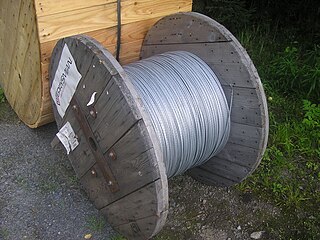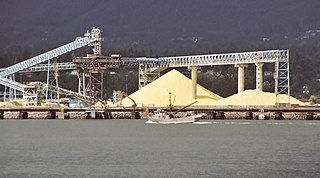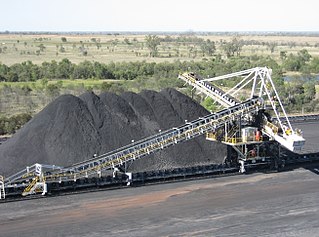 W
WBulk material handling is an engineering field that is centered on the design of equipment used for the handling of dry materials. Bulk materials are those dry materials which are powdery, granular or lumpy in nature, and are stored in heaps. Examples of bulk materials are minerals, ores, coal, cereals, woodchips, sand, gravel, clay, cement, ash, salt, chemicals, grain, sugar, flour and stone in loose bulk form. It can also relate to the handling of mixed wastes. Bulk material handling is an essential part of all industries that process bulk ingredients, including: food, beverage, confectionery, pet food, animal feed, tobacco, chemical, agricultural, polymer, plastic, rubber, ceramic, electronics, metals, minerals, paint, paper, textiles and more.
 W
WA coal preparation plant is a facility that washes coal of soil and rock, crushes it into graded sized chunks (sorting), stockpiles grades preparing it for transport to market, and more often than not, also loads coal into rail cars, barges, or ships.
 W
WBall transfer units are omnidirectional load-bearing spherical balls mounted inside a restraining fixture. They are identical in principle to a computer trackball. Typically the design involves a single large ball supported by smaller ball bearings.
 W
WA bucket elevator, also called a grain leg, is a mechanism for hauling flowable bulk materials vertically.
 W
WBulk cargo is commodity cargo that is transported unpackaged in large quantities.
 W
WA cable reel is a round, drum-shaped object such as a spool used to carry various types of electrical wires. Cable reels, which can also be termed as drums, have been used for many years to transport electric cables, fiber optic cables and wire products. Cable reels usually come in four different types, each with their own uses: wood, plywood, plastic and steel.
 W
WCoal homogenization refers to the process of mixing coal to reduce the variance of the product supplied. This homogenization process is performed during the coal stockpiling operation. Although the terms blending and homogenization are often used interchangeably, there are differences as the definitions show. The most notable difference is that blending refers to stacking coal from different sources together on one stockpile. The reclaimed heap would then typically have a weighted average output quality of the input sources. In contrast, homogenization focuses on reducing the variance of only one source. A blending operation will cause some homogenization.
 W
WA coal preparation plant is a facility that washes coal of soil and rock, crushes it into graded sized chunks (sorting), stockpiles grades preparing it for transport to market, and more often than not, also loads coal into rail cars, barges, or ships.
 W
WA conveyor belt is the carrying medium of a belt conveyor system. A belt conveyor system is one of many types of conveyor systems. A belt conveyor system consists of two or more pulleys, with a closed loop of carrying medium—the conveyor belt—that rotates about them. One or both of the pulleys are powered, moving the belt and the material on the belt forward. The powered pulley is called the drive pulley while the unpowered pulley is called the idler pulley. There are two main industrial classes of belt conveyors; Those in general material handling such as those moving boxes along inside a factory and bulk material handling such as those used to transport large volumes of resources and agricultural materials, such as grain, salt, coal, ore, sand, overburden and more.
 W
WA conveyor chain is chain that has been designed specifically for chain conveyor systems. It consists of a series of journal bearings that are held together by constraining link plates. Each bearing consists of a pin and a bush on which the chain roller revolves.
 W
WThe Hulett was an ore unloader that was widely used on the Great Lakes of North America. It was unsuited to tidewater ports because it could not adjust for rising and falling tides, although one was used in New York City.
 W
WA reach stacker is a vehicle used for handling intermodal cargo containers in small terminals or medium-sized ports. Reach stackers are able to transport a container short distances very quickly and pile them in various rows depending on its access.
 W
WA reclaimer is a large machine used in bulk material handling applications. A reclaimer's function is to recover bulk material such as ores and cereals from a stockpile. A stacker is used to stack the material.
 W
WA reel is an object around which lengths of another material are wound for storage. Generally a reel has a cylindrical core and walls on the sides to retain the material wound around the core. In some cases the core is hollow, although other items may be mounted on it, and grips may exist for mechanically turning the reel.
 W
WA screw conveyor or auger conveyor is a mechanism that uses a rotating helical screw blade, called a "flighting", usually within a tube, to move liquid or granular materials. They are used in many bulk handling industries. Screw conveyors in modern industry are often used horizontally or at a slight incline as an efficient way to move semi-solid materials, including food waste, wood chips, aggregates, cereal grains, animal feed, boiler ash, meat, and bone meal, municipal solid waste, and many others. The first type of screw conveyor was the Archimedes' screw, used since ancient times to pump irrigation water.
 W
WA stacker is a large machine used in bulk material handling. Its function is to pile bulk material such as limestone, ores and cereals on to a stockpile. A reclaimer can be used to recover the material.
 W
WA stockpile is a pile or storage location for bulk materials, forming part of the bulk material handling process.
 W
WA tipple is a structure used at a mine to load the extracted product for transport, typically into railroad hopper cars. In the United States, tipples have been frequently associated with coal mines, but they have also been used for hard rock mining.